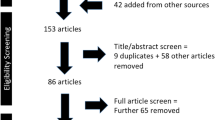Abstract
Background
The use of herbal medicines by pregnant women is on the rise. However, there is limited information regarding the safety of these compounds during pregnancy. Therefore, the goal of this study was to explore the consequences of raspberry leaf use during gestation in Wistar rats.
Methods
Female rats were randomly assigned to receive vehicle, raspberry leaf, or specific flavonoids in raspberry leaf (kaempferol or quercetin; 10 mg/kg per day) orally once breeding had been confirmed until parturition. We assessed pregnancy outcomes in the P generation and reproductive development/fertility in the F1 raspberry leaf—exposed female offspring.
Results
Raspberry leaf use during pregnancy was associated with increased gestation length and accelerated reproductive development in the F1 offspring.
Conclusions
Results from this study have shown for the first time that raspberry leaf use during pregnancy can have long-term consequences for the health of the offspring and raise concerns about the safety of this herbal preparation for use during pregnancy.
Similar content being viewed by others
References
Conover EA. Herbal agents and over-the-counter medications in pregnancy. Best Pract Res Clin Endocrinol Metab. 2003;17:237–251.
Nordeng H, Havnen GC. Impact of socio-demographic factors, knowledge and attitude on the use of herbal drugs in pregnancy. Acta Obstet Gynecol Scand. 2005;84:26–33.
Refuerzo JS, Blackwell SC, Sokol RJ, et al. Use of over-the-counter medication and herbal remedies in pregnancy. Am J Perinatol. 2005;22:321–324.
Tsui B, Dennehy CE, Tsourounis C. A survey of dietary supplement use during pregnancy at an academic medical center. Am J Obstet Gynecol. 2001;185:433–437.
Tiran D. The use of herbs by pregnant and childbearing women: a risk-benefit assessment. Complement Ther Nurs Midwifery. 2003;9:176–181.
Wilkinson JM. What do we know about herbal morning sickness treatments? Midwifery. 2000;16:224–228.
McFarlin BL, Gibson MH, O’Rear J, Harman P. A national survey of herbal preparation use by nurse-midwives for labor stimulation. J Nurse Midwifery. 1999;44:205–216.
Simpson M, Parsons M, Greenwood J, Wade K. Raspberry leaf in pregnancy: its safety and efficacy in labor. J Midwifery Womens Health. 2001;46:51–59.
Flecknell PA, Roughan JV, Stewart R. Use of oral buprenor-phine (‘buprenorphine jello’) for postoperative analgesia in rats-a clinical trial. Lab Anim. 1999;33:169–174.
Machha A, Mustafa MR. Chronic treatment with flavonoids prevents endothelial dysfunction in spontaneously hypertensive rat aorta. J Cardiovasc Pharmacol. 2005;46:36–40.
Sanchez M, Galisteo M, Vera R, et al. Quercetin downregu-lates NADPH oxidase, increases eNOS activity and prevents endothelial dysfunction in spontaneously hypertensive rats. J Hypertens. 2006;24:259–261.
Bom D, Barron ML. Herb use in pregnancy: what nurses should know. MCN Am J Matern Child Nurs. 2005;30:201–206.
Pinn G, Pallett L. Herbal medicine in pregnancy. Complement Ther Nurs Midwifery. 2002;8:77–80.
Forster DA, Denning A, Wills G, Bolger M, McCarthy E. Herbal medicine use during pregnancy in a group of Australian women. BMC Pregnancy Childbirth. 2006;6:21.
Patel AV, Rojas-Vera J, Dacke CG. Therapeutic constituents and actions of Rubus species. Curr Med Chem. 2004;11:1501–1512.
Gudej J, Tomczyk M. Determination of flavonoids, tannins and ellagic acid in leaves from Rubus L. Species. Arch Pharm Res. 2004;27:1114–1119.
Fraser LR, Beyret E, Milligan SR, Adeoya-Osiguwa SA. Effects of estrogenic xenobiotics on human and mouse spermatozoa. Hum Reprod. 2006;21:1184–1193.
Li MW, Yudin AI, VandeVoort CA, Sabeur K, Primakoff P, Overstreet JW. Inhibition of monkey sperm hyaluronidase activity and heterologous cumulus penetration by flavonoids. Biol Reprod. 1997;56:1383–1397.
Khanduja KL, Verma A, Bhardwaj A. Impairment of human sperm motility and viability by quercetin is independent of lipid peroxidation. Andrologia. 2001;33:277–281.
Hiremath SP, Rudresh K, Badami S, Patil SB, Patil SR. Post-coital antifertility activity of Acalypha indica L. J Ethnopharma-col. 1999;67:253–258.
Hiremath SP, Badama S, Hunasagatta SK, Patil SB. Antiferti-lity and hormonal properties of Striga orobanchioides. Eur J Phar-macol. 2000;391:193–197.
Wu Z, Yang Y, Chen Y, Xia G, Zhang R. Effects of subcua-taneous administration of daidzein on blastocyst implantation in rats. Food Chem Toxicol. 2005;43:167–172.
Yoshikawa M, Uemura T, Shimoda H, Kishi A, Kawahara Y, Matsuda H. Medicinal foodstuffs. XVIII. Phytoestrogens from the aerial part of Petroselinum crispum MILL. (Parsley) and structures of 6-acetylapiin and a new monoterpene glycoside, petroside. Chem Pharm Bull. 2000;48:1039–1044.
Buck Louis GM, Gray LE Jr, Marcus M, et al. Environmental factors and puberty timing: expert panel research needs. Pedia-tries. 2008;121(suppl 3):S192–S207.
Cesario SK, Hughes LA. Precocious puberty: a comprehensive review of the literature. J Obstet Gynecol Neonatal Nurs. 2007;36:263–274.
Euling SY, Selecan SG, Pescovitz OH, Skakkebaek NE. Role of environmental factors in the timing of puberty. Pediatrics. 2008;121(suppl 3):S167–S171.
Barker DJ. The developmental origins of well-being. Philos Trans R Soc Lond B Biol Sei. 2004;359:1359–1366.
Wilkinson JM. Effect of ginger tea on the fetal development of Sprague-Dawley rats. Reprod Toxicol. 2000;14:507–512.
Author information
Authors and Affiliations
Corresponding author
Additional information
We thank Carolyn Cesta, Pei Wen Chou, Laura Paduch, Jennifer Bruin, Alex Petre, Kajal Chohan, and the staff of the Central Animal Facility at McMaster University for assistance with the animal work. This project was supported by a SickKids Foundation grant in Complementary and Alternative Health Care and Paediatrics and the Canadian Institutes of Health Research (ACH and DJC).
Rights and permissions
About this article
Cite this article
Johnson, J.R., Makaji, E., Ho, S. et al. Effect of Maternal Raspberry Leaf Consumption in Rats on Pregnancy Outcome and the Fertility of the Female Offspring. Reprod. Sci. 16, 605–609 (2009). https://doi.org/10.1177/1933719109332823
Published:
Issue Date:
DOI: https://doi.org/10.1177/1933719109332823




